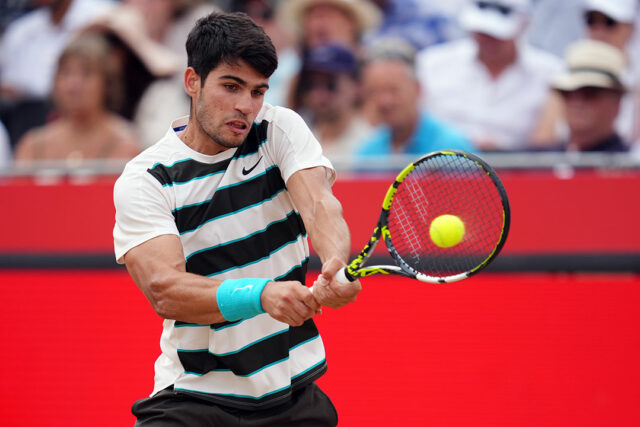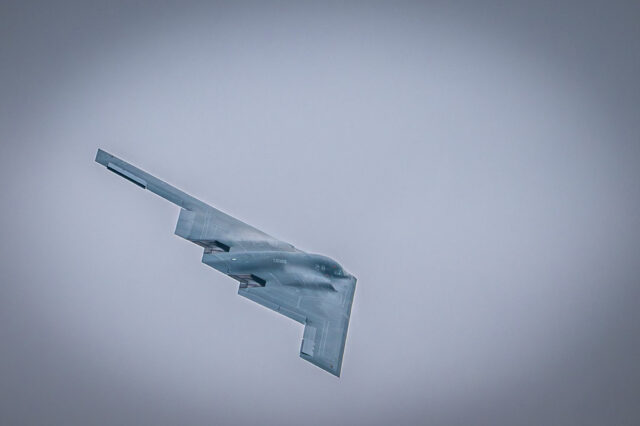WASHINGTON — With his unprecedented decision to bomb Iran’s nuclear sites, directly joining Israel’s air attack on its regional arch foe, US President Donald J. Trump has done something he had long vowed to avoid — intervene militarily in a major foreign war.
The dramatic US strike, including the targeting of Iran’s most heavily fortified nuclear installation deep underground, marks the biggest foreign policy gamble of Mr. Trump’s two presidencies and one fraught with risks and unknowns.
Mr. Trump, who insisted on Saturday that Iran must now make peace or face further attacks, could provoke Tehran into retaliating by closing the Strait of Hormuz, the world’s most important oil artery, attacking US military bases and allies in the Middle East, stepping up its missile barrage on Israel and activating proxy groups against American and Israeli interests worldwide, analysts said.
Such moves could escalate into a broader, more protracted conflict than Mr. Trump had envisioned, evoking echoes of the “forever wars” that America fought in Iraq and Afghanistan, which he had derided as “stupid” and promised never to be dragged into.
“The Iranians are seriously weakened and degraded in their military capabilities,” said Aaron David Miller, a former Middle East negotiator for Democratic and Republican administrations. “But they have all sorts of asymmetric ways that they can respond… This is not going to end quick.”
In the lead-up to the bombing that he announced late on Saturday, Mr. Trump had vacillated between threats of military action and appeals for renewed negotiation to persuade Iran to reach a deal to dismantle its nuclear program.
A senior White House official said that once Mr. Trump was convinced that Tehran had no interest in reaching a nuclear agreement, he decided the strikes were “the right thing to do.”
Mr. Trump gave the go-ahead once he was assured of a “high probability of success,” the official said — a determination reached after more than a week of Israeli air attacks on Iran’s nuclear and military facilities paved the way for the US to deliver the potentially crowning blow.
NUCLEAR THREAT REMAINS
Mr. Trump touted the “great success” of the strikes, which he said included the use of massive “bunker-buster bombs” on the main site at Fordow. But some experts suggested that while Iran’s nuclear program may have been set back for many years, the threat may be far from over.
Iran denies seeking a nuclear weapon, saying its program is for purely peaceful purposes.
“In the long term, military action is likely to push Iran to determine nuclear weapons are necessary for deterrence and that Washington is not interested in diplomacy,” the Arms Control Association, a non-partisan US-based organization that advocates for arms control legislation, said in a statement.
“Military strikes alone cannot destroy Iran’s extensive nuclear knowledge. The strikes will set Iran’s program back, but at the cost of strengthening Tehran’s resolve to reconstitute its sensitive nuclear activities,” the group said.
Eric Lob, assistant professor in the Department of Politics and International Relations at Florida International University, said Iran’s next move remains an open question and suggested that among its forms of retaliation could be to hit “soft targets” of the US and Israel inside and outside the region.
But he also said there was a possibility that Iran could return to the negotiating table — “though they would be doing so in an even weaker position” — or seek a diplomatic off-ramp.
In the immediate aftermath of the US strikes, however, Iran showed little appetite for concessions.
Iran’s Atomic Energy Organization said it would not allow development of its “national industry” to be stopped, and an Iranian state television commentator said every US citizen or military member in the region would now be legitimate targets.
Early on Sunday, Iran’s foreign ministry issued a statement warning that Tehran “considers it its right to resist with all its might against US military aggression.”
Karim Sadjadpour, an analyst at the Carnegie Endowment for International Peace, posted on X: “Trump indicated this is now the time for peace. It’s unclear and unlikely the Iranians will see it the same way. This is more likely to open a new chapter of the 46-year-old US-Iran war than conclude it.”
‘REGIME CHANGE’
Some analysts suggested that Mr. Trump, whose administration has previously disavowed any aim of dislodging the Iranian leadership, could be drawn into seeking “regime change” if Tehran carries out major reprisals or moves to build a nuclear weapon.
That, in turn, would bring additional risks.
“Beware mission creep, aiming for regime change and democratization campaigns,” said Laura Blumenfeld, a Middle East analyst at the Johns Hopkins School for Advanced International Studies in Washington. “You’ll find the bones of many failed US moral missions buried in Middle East sands.”
Jonathan Panikoff, a former US deputy intelligence officer for the Middle East, said Iran’s leadership would quickly engage in “disproportionate attacks” if it felt its survival was imperiled.
But Tehran will also have to be mindful of the consequences, he said. While actions such as closing the Strait of Hormuz would pose problems for Mr. Trump with the resulting higher oil prices and potential US inflationary impact, it would also hurt China, one of Iran’s few powerful allies.
At the same time, Mr. Trump is already facing strong push-back from congressional Democrats against the Iran attack and will also have to contend with opposition from the anti-interventionist wing of his Republican MAGA base.
Mr. Trump, who faced no major international crisis in his first term, is now embroiled in one just six months into his second.
Even if he hopes US military involvement can be limited in time and scope, the history of such conflicts often carries unintended consequences for American presidents.
Mr. Trump’s slogan of “peace through strength” will certainly be tested as never before, especially with his opening of a new military front after failing to meet his campaign promises to quickly end wars in Ukraine and Gaza.
“Trump is back in the war business,” said Richard Gowan, United Nations director at the International Crisis Group. “I am not sure anyone in Moscow, Tehran or Beijing ever believed his spiel that he is a peacemaker. It always looked more like a campaign phrase than a strategy.” — Reuters












